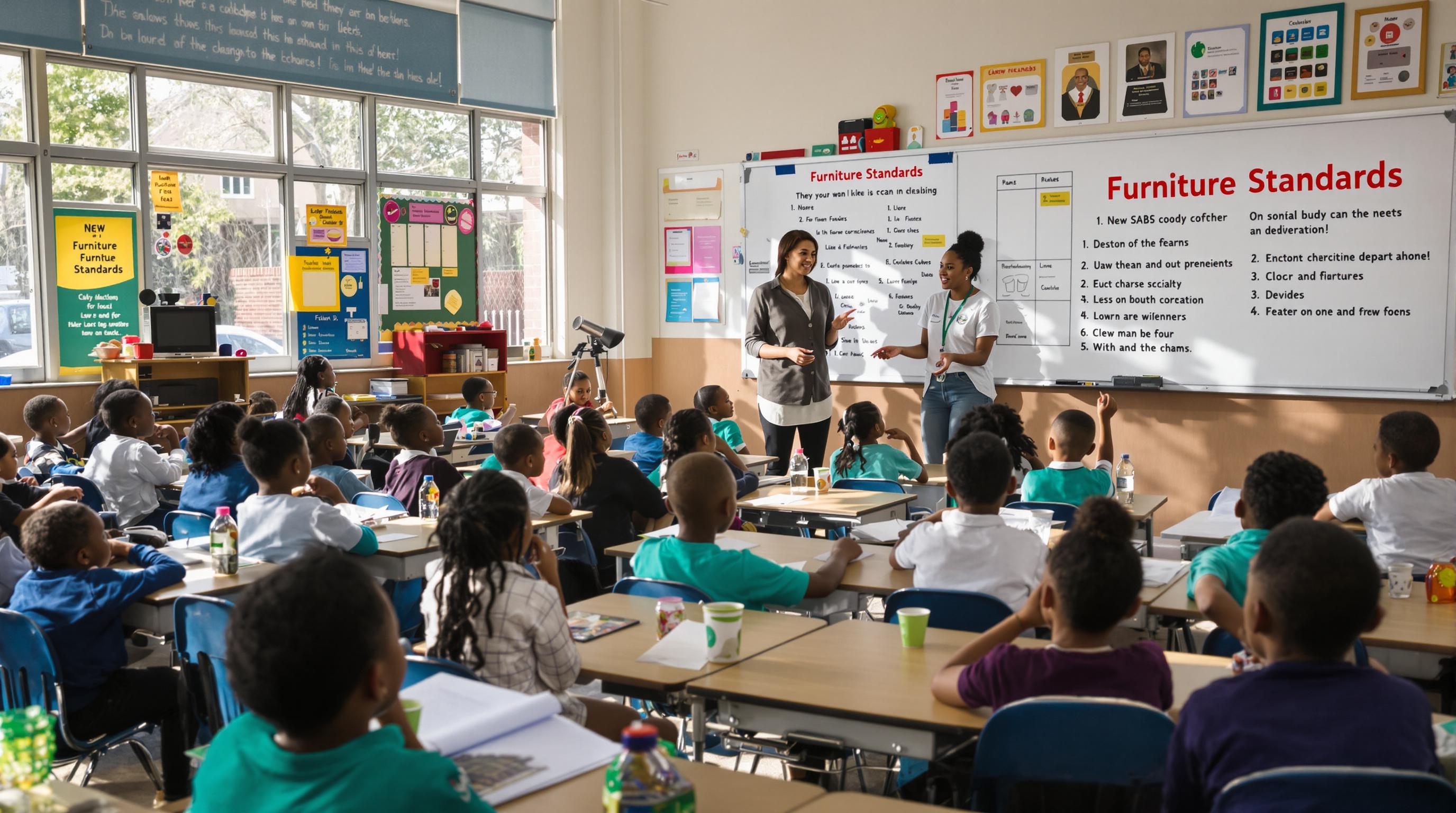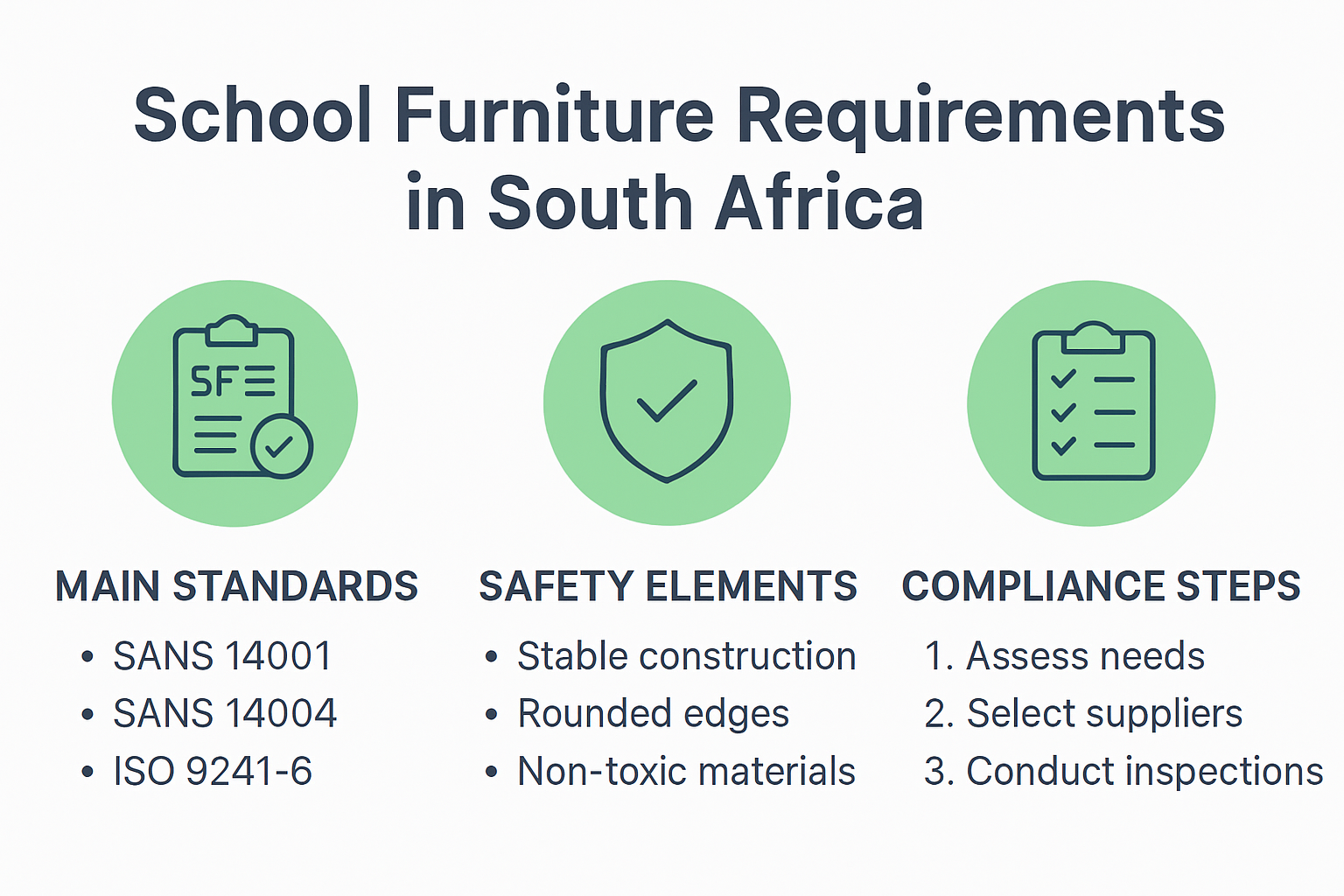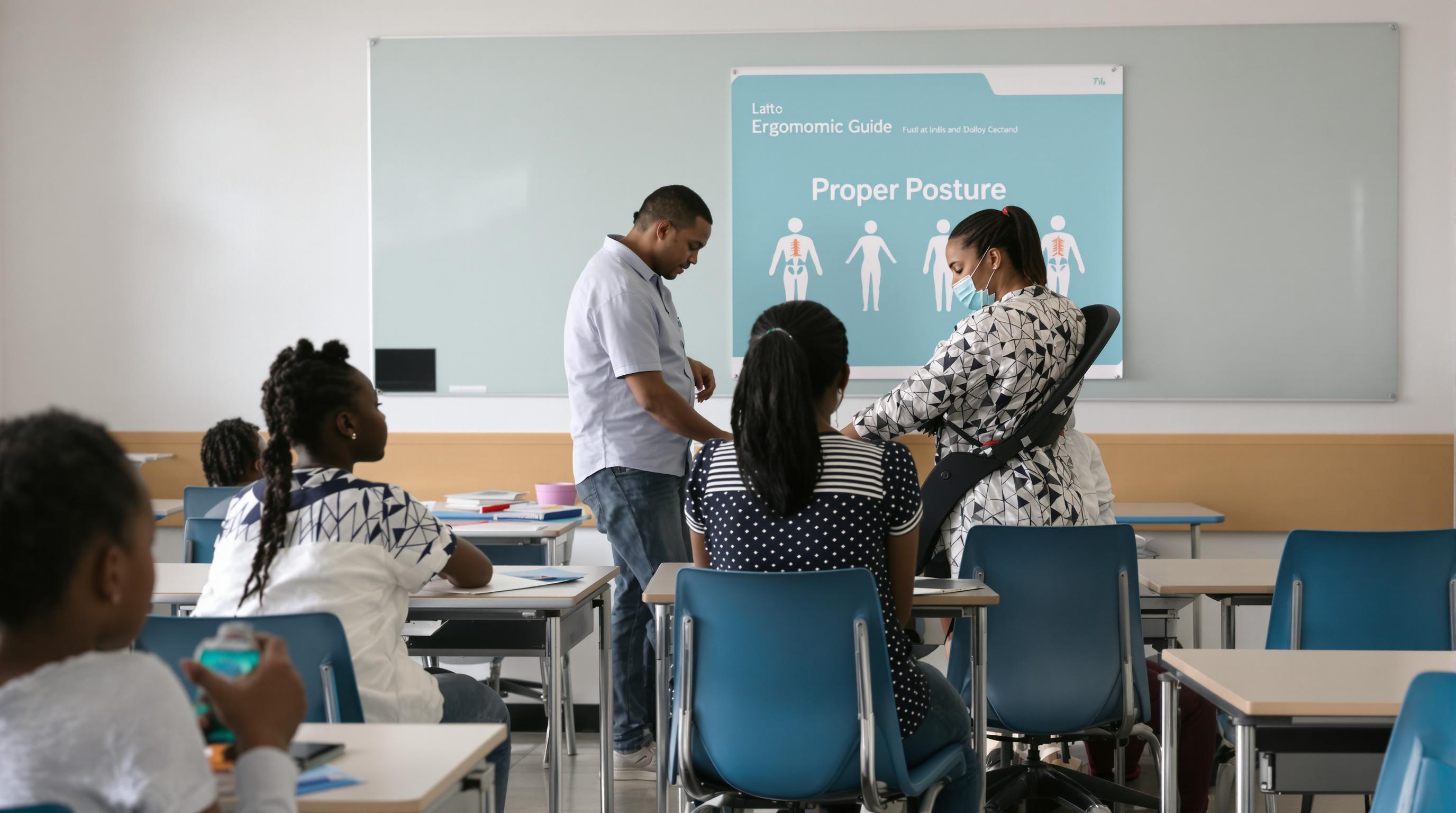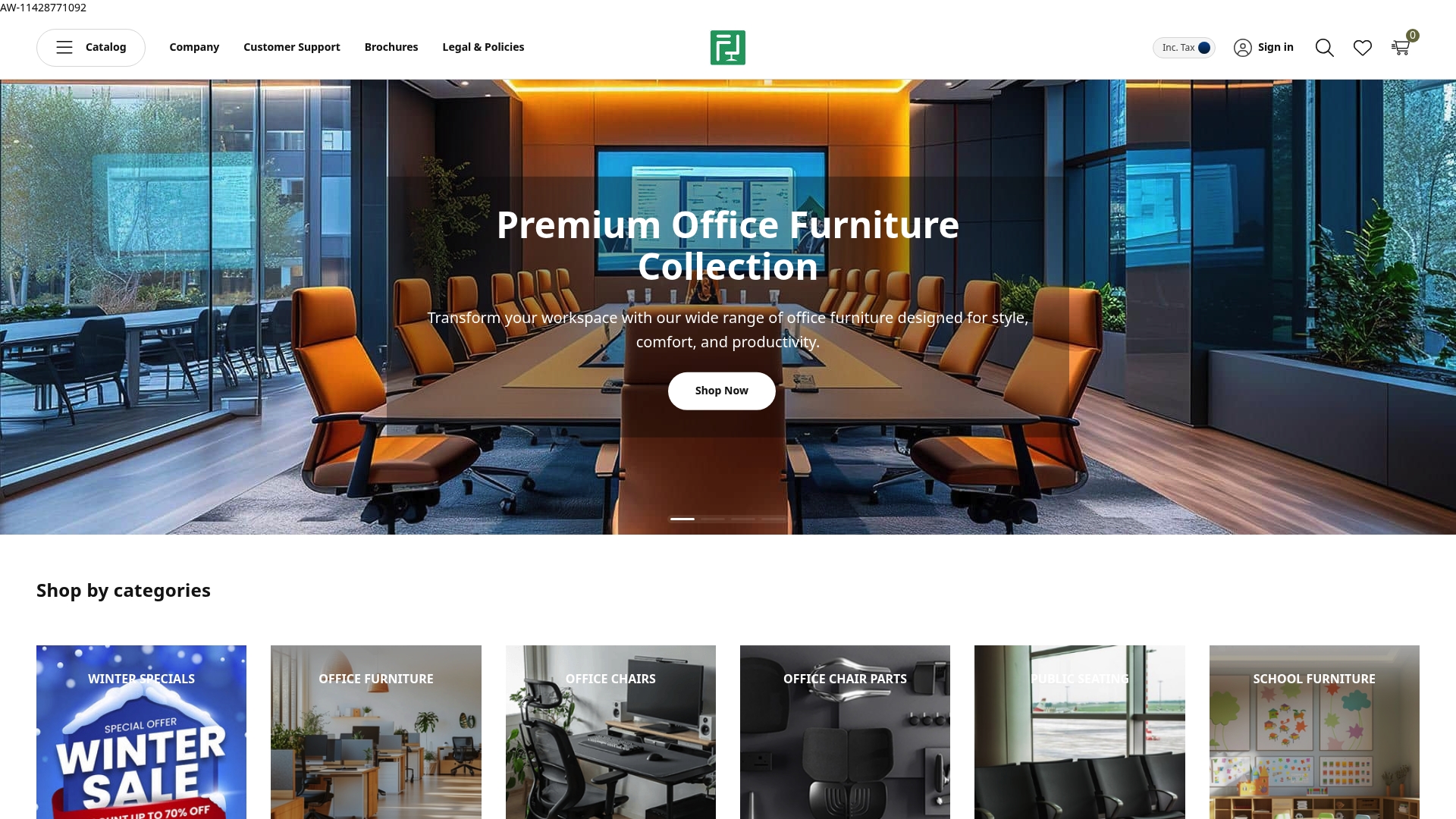School Furniture Requirements in South Africa for 2025
Jul 20, 2025
School Furniture Requirements in South Africa for 2025

Choosing the right school furniture in South Africa shapes more than the look of a classroom. It can directly influence student health and attention spans. Surprisingly, over 10 million desks and chairs must meet strict national guidelines every year. Many assume any old furniture will do, but one wrong purchase can sideline a school’s compliance and comfort for years. What really matters are the details hidden in the latest standards for 2025.
Table of Contents
- Key School Furniture Standards In South Africa
- Factors To Consider Before Purchasing Furniture
- Safety And Durability Requirements For Schools
- Guidelines For Businesses Supplying School Furniture
Quick Summary
| Takeaway | Explanation |
|---|---|
| Adhere to Established Standards | Compliance with South African Bureau of Standards (SABS) guidelines ensures that all school furniture meets safety, ergonomic, and quality requirements, supporting student well-being. |
| Prioritize Ergonomic Design | Furniture should accommodate different body sizes and promote proper posture to enhance student comfort and learning effectiveness, reducing long-term health issues. |
| Focus on Durability and Cost-Effectiveness | Invest in high-quality, durable materials that reduce long-term maintenance costs and withstand frequent use, ensuring consistent performance across educational environments. |
| Implement Robust Procurement Procedures | Establish dedicated committees for procurement that align purchases with national standards, budget constraints, and proper asset tracking to ensure effective furniture management. |
| Ensure Compliance and Quality Assurance | Regular inspections and documentation of compliance with national standards are crucial for maintaining the safety and functionality of school furniture. |
Key School Furniture Standards in South Africa
School furniture standards in South Africa represent a critical framework ensuring the safety, ergonomics, and quality of learning environments across educational institutions. These standards are meticulously developed to protect students and create optimal learning spaces that support physical comfort and academic performance.

Regulatory Framework and Ergonomic Specifications
The South African Bureau of Standards (SABS) has established comprehensive guidelines through SANS 660, which provides detailed specifications for school furniture materials, construction, and performance requirements. School furniture standards mandate precise measurements and design criteria for classroom tables, chairs, and teaching equipment to ensure student well-being and workplace health principles.
These standards address multiple critical aspects of school furniture design, including:
- Dimensional Accuracy: Precise height and width specifications matching age-appropriate student ergonomics
- Material Quality: Durable materials resistant to wear, moisture, and potential classroom environmental challenges
- Safety Requirements: Rounded edges, stable structures, and non-toxic material compositions
According to the Department of Basic Education, these standards are not merely recommendations but mandatory guidelines for procurement and installation in public educational institutions. The regulations ensure that every piece of classroom furniture meets stringent national quality benchmarks.
Performance and Durability Standards
Performance standards extend beyond basic design requirements. They encompass rigorous testing protocols that evaluate furniture’s structural integrity, load-bearing capacities, and long-term durability. School furniture must withstand daily student interactions, frequent repositioning, and potential mechanical stress without compromising safety or functionality.
Key performance metrics include:
- Load Testing: Chairs and desks must support specified weight ranges
- Impact Resistance: Materials must resist cracking or structural failure under typical classroom conditions
- Ergonomic Comfort: Furniture design must support proper posture and minimize physical strain during extended learning periods
These comprehensive standards reflect South Africa’s commitment to creating learning environments that prioritize student health, comfort, and educational effectiveness. By establishing clear, measurable requirements, the country ensures that school furniture is not just functional equipment but a critical component of the educational infrastructure.
For schools and educational administrators seeking high-quality furniture solutions, explore our range of classroom furniture that meets and exceeds these national standards, providing optimal learning environments for students across South Africa.
Factors to Consider Before Purchasing Furniture
Purchasing school furniture requires a strategic approach that goes beyond simple aesthetic considerations. Educational institutions must carefully evaluate multiple factors to ensure they invest in furniture that supports learning environments, student comfort, and long-term institutional sustainability.
Ergonomic Design and Student Comfort

Ergonomic considerations are paramount when selecting school furniture. Research from the Cooperative Educational Service Agency indicates that furniture directly impacts student learning and physical well-being. Schools must prioritize designs that support proper posture, accommodate different body sizes, and reduce physical strain during extended learning periods.
Key ergonomic factors include:
- Height Adjustability: Furniture that can adapt to different student age groups
- Proper Support: Chairs and desks that promote correct spinal alignment
- Movement Flexibility: Furniture that allows subtle movement without compromising stability
The Western Cape Education Department emphasizes the importance of selecting furniture that meets specific physiological requirements. Poorly designed furniture can lead to long-term health issues, reduced concentration, and decreased learning effectiveness.
Below is a table organising the key ergonomic and durability factors to consider when purchasing school furniture in South Africa:
| Factor | Description | Importance |
|---|---|---|
| Height Adjustability | Suitable for various age groups and body sizes | Supports posture, comfort |
| Proper Support | Promotes correct spinal alignment | Prevents health issues |
| Movement Flexibility | Allows natural movement without losing stability | Increases concentration |
| Material Quality | Resists wear, moisture, and damage | Ensures longevity |
| Structural Integrity | Withstands frequent use and mechanical stress | Reduces replacements |
| Maintenance Requirements | Easy to clean and repair | Lowers long-term costs |
Durability and Long-Term Cost Effectiveness
Durability is a critical consideration for school furniture procurement. According to the Department of Basic Education, educational institutions should focus on furniture that offers maximum longevity and minimal maintenance requirements.
Considerations for durability include:
- Material Quality: Resistance to wear, moisture, and potential classroom damage
- Structural Integrity: Ability to withstand frequent use and potential mechanical stress
- Maintenance Requirements: Ease of cleaning and potential repair costs
Schools must conduct comprehensive cost-benefit analyses that extend beyond initial purchase prices. Investing in high-quality furniture reduces long-term replacement expenses and ensures consistent performance across academic environments.
Institutional Compliance and Asset Management
Procurement of school furniture requires strict adherence to institutional guidelines and asset management protocols. The Western Cape Education Department recommends establishing dedicated procurement committees that maintain comprehensive records and implement robust asset tracking mechanisms.
Essential compliance considerations include:
- Standardization: Alignment with national furniture standards
- Asset Tracking: Proper marking and documentation of furniture items
- Budget Alignment: Ensuring purchases meet institutional financial constraints
For educational administrators seeking comprehensive furniture solutions, explore our expert guidance on school furniture selection that addresses these critical procurement considerations. Our range of solutions ensures your institution makes informed, strategic furniture investments that support effective learning environments.
Safety and Durability Requirements for Schools
Safety and durability represent critical considerations in school furniture selection, directly impacting student well-being, institutional longevity, and educational infrastructure quality. South African educational institutions must adhere to stringent standards that protect students and ensure furniture investments remain sustainable and reliable.
Structural Safety Standards
The Regulations Relating to Minimum Uniform Norms and Standards for Public School Infrastructure establish comprehensive guidelines for furniture safety. These regulations mandate specific design parameters that minimize potential risks and protect students during daily classroom interactions.
Key structural safety requirements include:
- Edge Protection: Furniture must have rounded or smoothed edges to prevent accidental injuries
- Stability Testing: Chairs and desks must pass rigorous load-bearing and tipping resistance tests
- Material Non-Toxicity: Materials used must be free from harmful chemicals and meet health safety standards
According to the Business and Institutional Furniture Manufacturers Association, comprehensive safety evaluations extend beyond physical design, encompassing material composition, potential environmental interactions, and long-term performance metrics.
The following table summarizes key safety and compliance requirements for school furniture in South Africa:
| Safety/Compliance Requirement | Description |
|---|---|
| Edge Protection | Rounded or smoothed edges to prevent injuries |
| Stability Testing | Passes load-bearing and tipping resistance tests |
| Material Non-Toxicity | Free from harmful chemicals; meets health standards |
| Regular Inspection Protocols | Systematic safety and performance evaluations |
| Manufacturer Certification | Products certified by SABS or equivalent bodies |
| Continuous Performance Monitoring | Tracking durability and safety across school environments |
Durability and Wear Resistance
Durability represents more than structural integrity it reflects a school’s ability to maintain consistent learning environments under challenging conditions. Minister Siviwe Gwarube’s 2025 ministerial briefing emphasized the Department of Basic Education’s commitment to providing furniture that withstands frequent use and maintains performance standards.
Critical durability considerations include:
- Material Resilience: Furniture capable of resisting moisture, temperature variations, and mechanical stress
- Maintenance Requirements: Designs that minimize repair frequency and support easy cleaning protocols
- Lifespan Expectations: Furniture constructed to maintain structural and aesthetic quality over extended periods
Schools must evaluate furniture not just on initial cost but on long-term performance potential. Investing in high-quality, durable furniture reduces replacement frequencies and provides consistent learning environments.
Compliance and Quality Assurance
Comprehensive quality assurance involves multiple stakeholders ensuring furniture meets national standards. The South African Bureau of Standards (SABS) provides detailed specifications that manufacturers must meet, creating a robust framework for educational furniture production.
Quality assurance mechanisms include:
- Regular Inspection Protocols: Systematic evaluations of furniture performance and safety
- Manufacturer Certification: Ensuring production processes meet national standards
- Continuous Performance Monitoring: Tracking furniture performance across different educational environments
For educational administrators seeking furniture that meets these rigorous standards, explore our comprehensive school furniture solutions designed to provide safety, durability, and optimal learning environments.
Guidelines for Businesses Supplying School Furniture
Businesses supplying school furniture in South Africa must navigate a complex landscape of regulatory requirements, quality standards, and institutional expectations. Successfully meeting these guidelines demands a comprehensive understanding of national specifications, procurement protocols, and educational infrastructure needs.
Regulatory Compliance and Certification
The Department of Basic Education’s School Furniture Specifications establish rigorous standards that furniture suppliers must meticulously follow. Businesses must obtain comprehensive certifications demonstrating alignment with national quality and safety benchmarks.
Key regulatory compliance requirements include:
- SABS Certification: Mandatory verification from the South African Bureau of Standards
- Material Traceability: Detailed documentation of material sources and manufacturing processes
- Quality Control Documentation: Comprehensive testing records proving furniture meets prescribed standards
Suppliers must maintain transparent documentation that validates their products meet the stringent requirements outlined by governmental educational infrastructure regulations.
Product Specification and Documentation
The Public School Infrastructure Regulations review scheduled for 2025/26 emphasizes the importance of precise product specifications and comprehensive documentation. Businesses must provide detailed technical specifications that demonstrate their furniture’s compliance with national standards.
Essential documentation requirements include:
- Technical Specifications: Comprehensive product performance details
- Safety Compliance Certificates: Validated testing results
- Durability Performance Reports: Long-term usage and stress testing documentation
Businesses must develop robust submission packages that clearly communicate their products’ capabilities and alignment with national educational infrastructure standards.
Procurement and Tender Process Guidelines
New regulations for public school infrastructure have introduced more stringent procurement protocols. Businesses must understand and navigate complex tender processes that prioritize quality, affordability, and long-term value.
Critical procurement considerations include:
- Competitive Pricing: Balanced cost structures that provide value without compromising quality
- Scalability: Ability to meet large-scale institutional furniture requirements
- Customization Capabilities: Flexibility to adapt to diverse educational environment needs
For businesses seeking to successfully supply school furniture, explore our comprehensive procurement guidelines that provide insights into meeting national educational infrastructure standards. Our expertise helps suppliers navigate the complex landscape of school furniture procurement in South Africa.
Frequently Asked Questions
What are the key standards for school furniture in South Africa for 2025?
The key standards include compliance with the South African Bureau of Standards (SABS) guidelines, which mandate specifications for dimensions, material quality, safety, and ergonomic design to ensure student well-being and learning effectiveness.
How important is ergonomic design when selecting school furniture?
Ergonomic design is crucial as it promotes proper posture and comfort for students, helping to reduce long-term health issues and enhance learning by accommodating different body sizes and allowing for movement flexibility.
What factors should schools consider before purchasing furniture?
Schools should consider ergonomic design, durability, compliance with national standards, maintenance requirements, and cost-effectiveness to ensure they invest in furniture that supports both student comfort and institutional sustainability.
How can schools ensure the safety and durability of their furniture?
Schools can ensure safety and durability by adhering to structural safety standards, conducting regular inspections, investing in high-quality materials, and opting for furniture that meets SABS certification and performance testing requirements.
Upgrade to Compliant, Comfortable School Furniture for 2025
School administrators and procurement teams across South Africa face tough choices when updating school furniture. With new 2025 regulations demanding strict compliance to SABS standards and a greater focus on ergonomic design, it can feel overwhelming to find furniture that meets every requirement while staying within budget. Outdated or non-compliant desks and chairs can put your school at risk, negatively impact student comfort, and create budget headaches down the line. That is why many schools are searching for high-quality, durable solutions that pass every test for safety, longevity, and compliance.

Take the stress out of your next furniture purchase by partnering with a trusted supplier who truly understands the South African education sector. Explore the full range of compliant classroom and office furniture on Office Stock. For procurement teams needing guidance on making the right choice, our experts offer tailored recommendations and solutions that address the exact pain points raised in this article. Ready to meet the 2025 standards and keep your students safe and focused? Visit Office Stock’s homepage to view our latest products or connect with our team for professional advice. Make compliance and comfort your top priority today.
Recommended
- Double School Desk in Saligna Wood 1000mm Wide | Buy School Furniture Online - Office Stock
- Montego Visitor Office Chair | Buy Office Furniture Online - Office Stock
- Traditional School Chairs | Buy School Furniture Online - Office Stock
- Senator Executive Desk in Veneer Wood-3 | Buy Office Furniture Online - Office Stock
